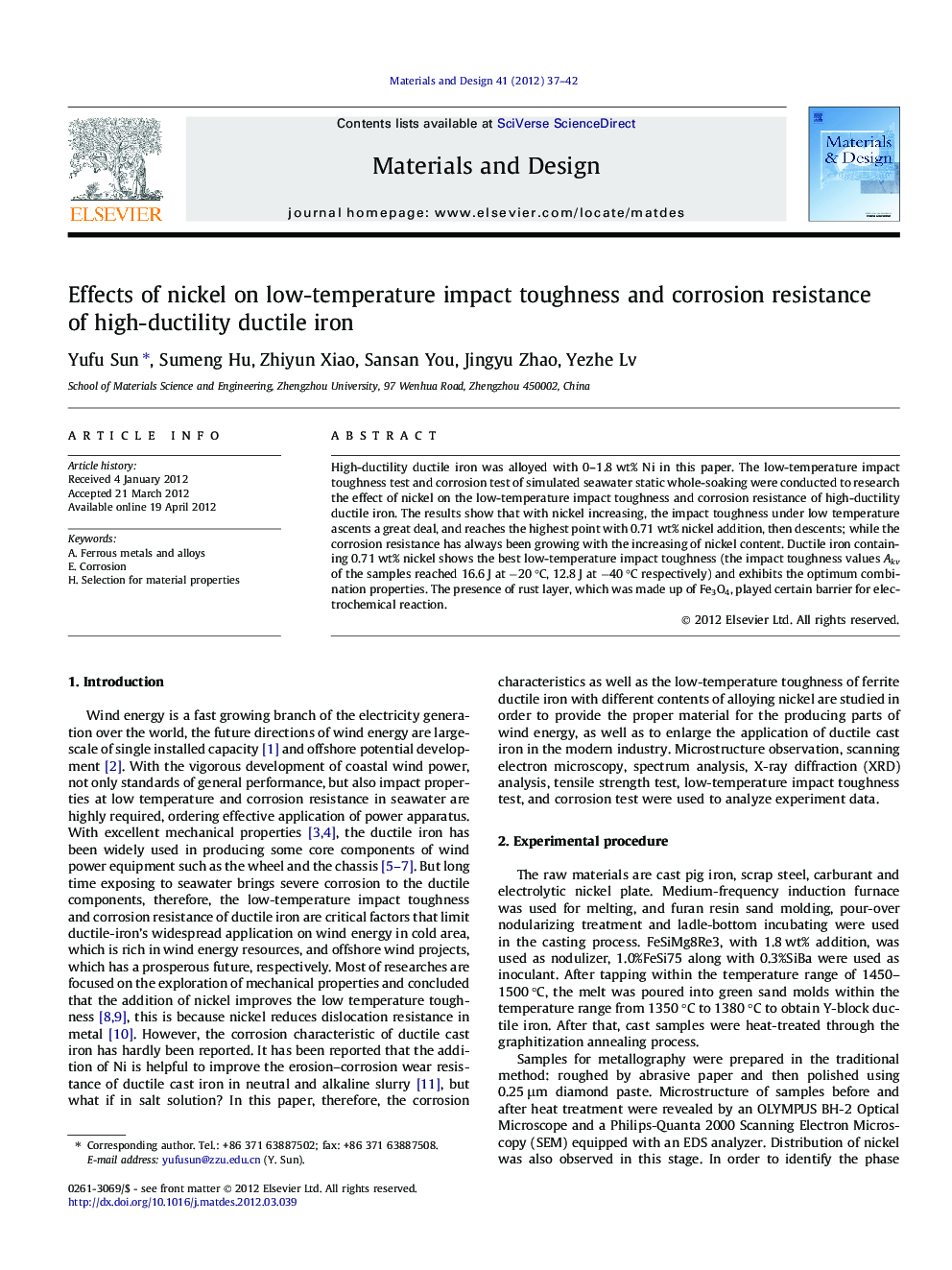| Article ID | Journal | Published Year | Pages | File Type |
|---|---|---|---|---|
| 830516 | Materials & Design (1980-2015) | 2012 | 6 Pages |
High-ductility ductile iron was alloyed with 0–1.8 wt% Ni in this paper. The low-temperature impact toughness test and corrosion test of simulated seawater static whole-soaking were conducted to research the effect of nickel on the low-temperature impact toughness and corrosion resistance of high-ductility ductile iron. The results show that with nickel increasing, the impact toughness under low temperature ascents a great deal, and reaches the highest point with 0.71 wt% nickel addition, then descents; while the corrosion resistance has always been growing with the increasing of nickel content. Ductile iron containing 0.71 wt% nickel shows the best low-temperature impact toughness (the impact toughness values Akv of the samples reached 16.6 J at −20 °C, 12.8 J at −40 °C respectively) and exhibits the optimum combination properties. The presence of rust layer, which was made up of Fe3O4, played certain barrier for electrochemical reaction.
► 0–1.8 wt% nickel was added in high-ductility ductile iron. ► The microstructure changes were examined before and after annealing. ► Increasing Ni addition will increase the tensile strength and elongation. ► Ni increases the impact toughness, and iron with 7.1 wt% Ni shows the best property. ► Ni makes contribution to the increase of the corrosion resistance.
